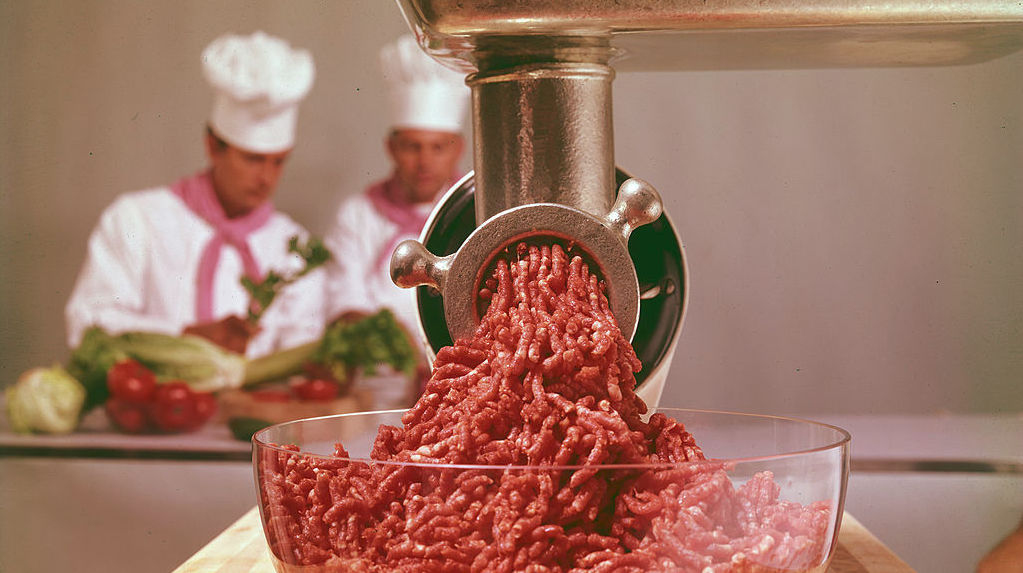Does This Guy Taste Funny To You? An Intro To The Cannibal Sandwich
This Wisconsin holiday dish isn't quite what it sounds like, but still should be approached with caution.
Every year during the winter (like right now), you'll hear a weird warning on the news coming from the Midwest. "Please reconsider eating cannibal sandwiches," they'll say, over the loudspeaker. "They might make you sick."
The rest of the world looks up from its plates, cranes its heads, and peeks over in our general direction. Then you hear amongst the crowd, "...a what sandwich?!"
Yes. A "cannibal sandwich." This dish is not a legal way to eat a human being (sorry to get your hopes up, Hannibal), but it is a unique way to eat ground beef. A cannibal sandwich is an open-faced sandwich on cocktail rye with a generous smear of raw ground beef topped with slivers of raw onion and sprinkled with a little bit of salt and pepper. That's it. Sometimes you'll hear people call it tiger meat or wildcat.
"What?" you shout. "Isn't that just steak tartare?" Well, at its heart, more or less, it is a bare-bones (pun somewhat intended) version of tartare, but with no frills like egg yolk, capers, or mustard. This sandwich hails from the Milwaukee area and is a holiday tradition in some Wisconsin homes. It's not a main course. Wisconsinites serve it on cocktail snack-sized squares of rye bread before dinner. You know, a holiday snack, before a whole roast human is carried out for the main part of the meal.
According to Wisconsin Public Radio, the origins of the cannibal sandwich aren't quite clear. My guess is that people weren't exactly yearning for the days of yore when their ancestors snacked on human heads like apples. The general consensus is that it's an artifact of tradition from the northern Europeans that settled in that part of Wisconsin.
But let's get to the good part: What does a cannibal sandwich taste like?
It's been a while for me, but I know I've actually had one at one point. The slight iron flavor and baby-food soft cow paste texture of the unseasoned raw ground beef is followed by the sharp lingering aftertaste of raw onion, along with some of the pungency from the rye bread it's served on. It doesn't taste like a mouthful of blood, which seems to be part of people's fear of eating raw beef. Was it worth trying in my opinion? Absolutely. Would I recommend it to you? It's very hard to say. I'm literally on the fence here with no teeter in either direction.
All-things-sandwich writer (and friend of mine) Jim Behymer took it upon himself to make one for his blog, Sandwich Tribunal, earlier this year. To take the most precaution, he ground his own sirloin at home using his own sanitized equipment. His conclusion was exactly the same as mine. "It's raw ground beef with onions, and you're either into that or you're not," he writes. "I didn't hate it but I don't feel strongly enough about it to really champion it to you either."
So why the constant yearly warning from health officials? Well, turns out, E. coli, salmonella, and listeria like hanging out in raw beef. And hanging out with these three fellas will make you best friends with your toilet for a while. Or you might end up in the hospital. Mass-ground beef at your local neighborhood supermarkets has a higher chance of being contaminated with the bacteria, than, say, meat ground at home, but even that comes with its own risks.
The Wisconsin Department of Health Services has this advice for you.
My personal statement to you is that as a food, you're not not missing out if you don't try one, but it's definitely a fun experience to remember. That being said, it's better to be safe than sorry, so feel free to live vicariously through my opinion on it. If you're on the fence and have the ingredients on hand (it is just beef, onions, and rye bread, after all), you can do what my friend Jim did with his leftovers and make a perfectly good patty melt.
